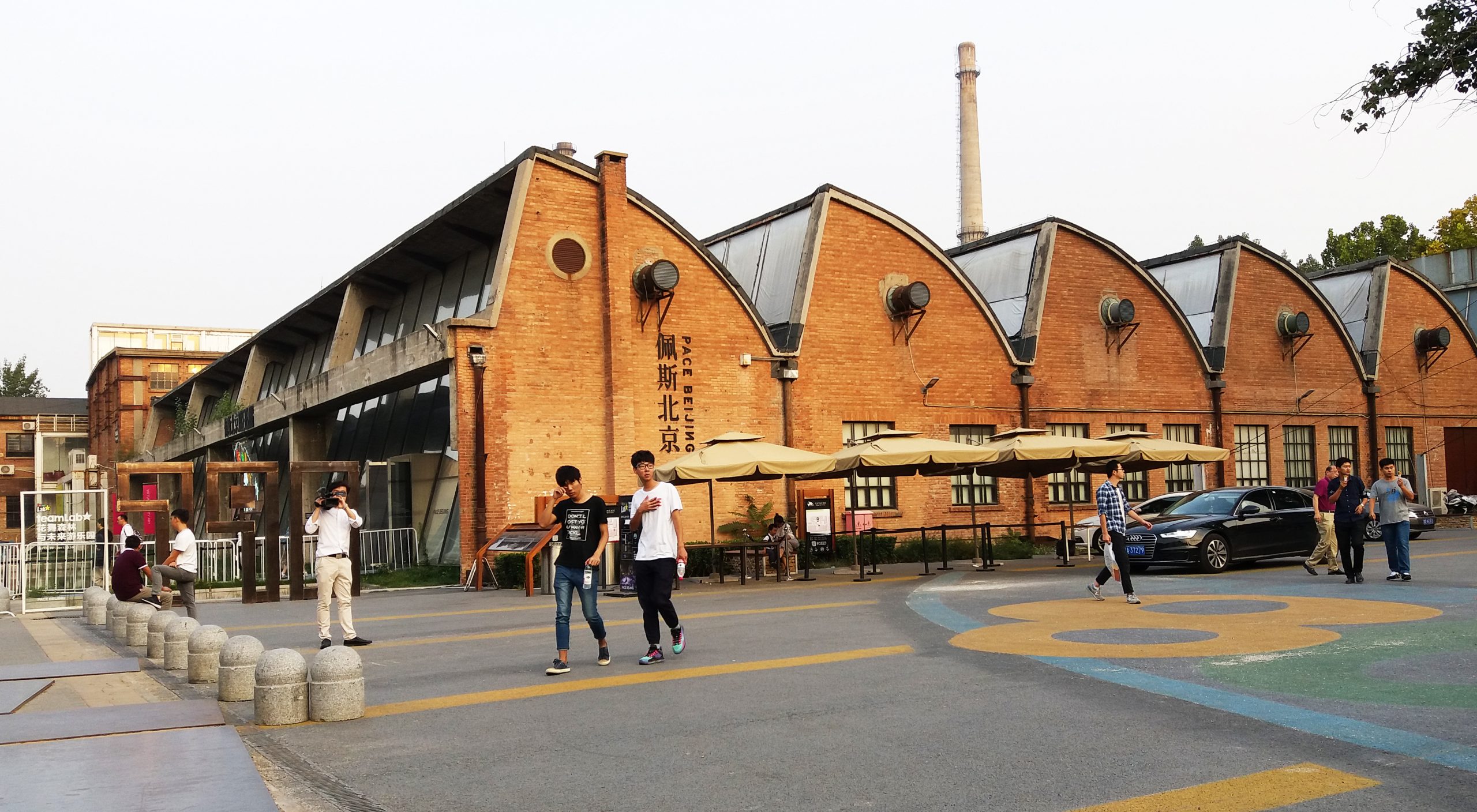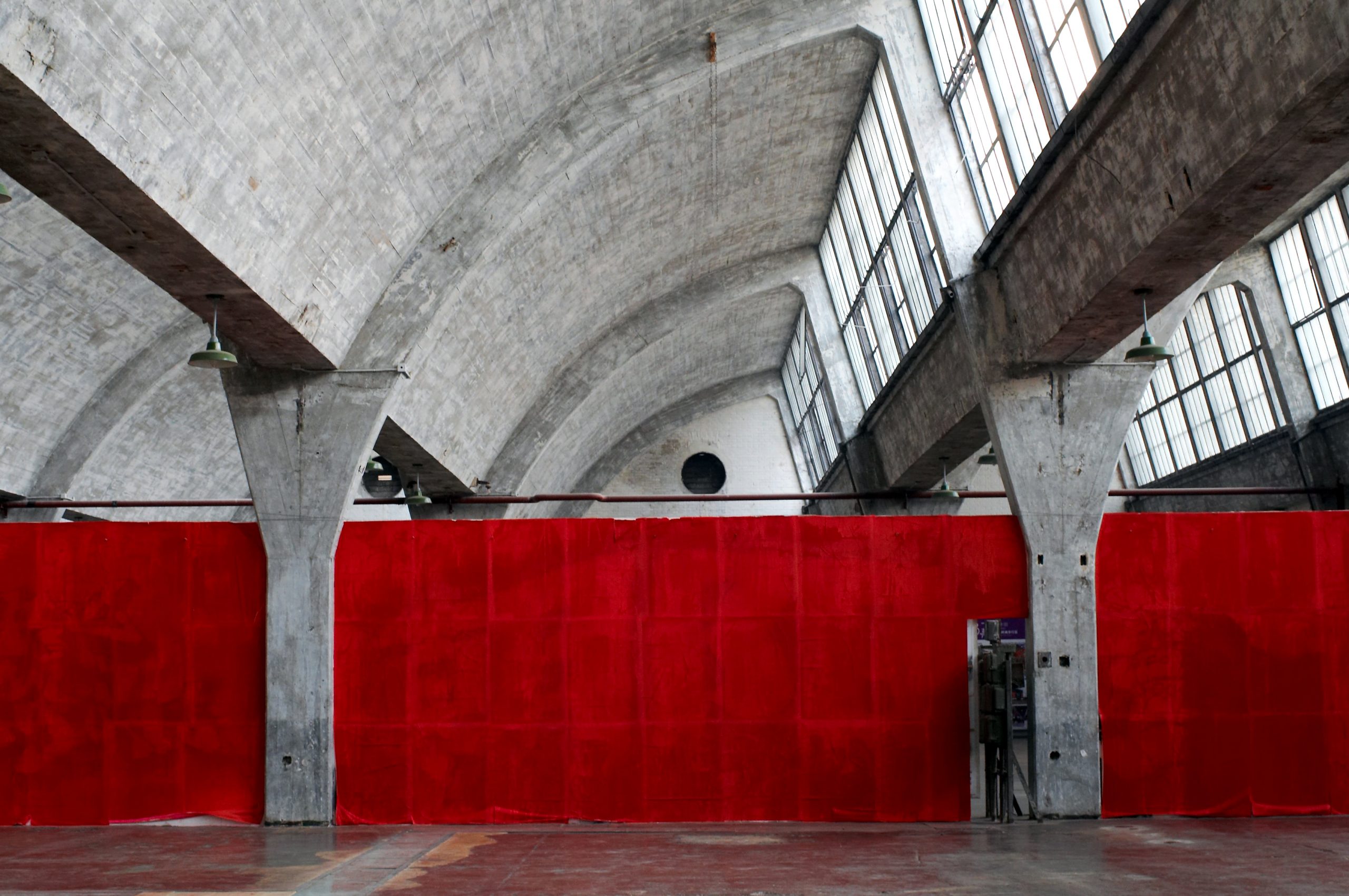
“Early spring, six o’clock in the evening, a shimmer of light coming through a dirty window, a few old machinery parts… I particularly like the arcs. The most beautiful curves are arcs.”
Beijing-based artist Huang Rui fell in love with 798 almost at first sight. That was in 2002, when 798 was just a military factory on the verge of closing. He never dreamed that a few years later this obsolete industrial area on the northeast edge of Beijing would develop into the epicentre of China’s booming contemporary art landscape.
798 is the number assigned in the 1950s to a state-run electronics factory on the outskirts of the capital city. Its full name is 798 Electronic Components Factory (in China it is a tradition to name state-run factories with digits, and those beginning with 7 are military ones). As part of the ‘Socialist Unification Plan’ signed by the Soviet Union and China, the 798 factory was a flagship project symbolising socialist cooperation and success.
“He never dreamed that this obsolete industrial area would develop into the epicentre of China’s booming contemporary art landscape”
The Russians enlisted East German experts to design the complex. The result was a Bauhaus-influenced design, which featured oversized windows, large spaces bathed in natural light, and distinctively sawtooth roofs. The high-arched ceilings created the perfect space to paint Maoist slogans during the Cultural Revolution.
798 entered China’s art scene by accident. Real estate operation the Seven-Star Group were appointed to rent out the abandoned buildings, with the hope of turning it into a high-tech development zone. However, when the site was vacated, it was a group of avant-garde artists who first arrived, ejected from their former run-down residence near the Old Summer Palace in northwestern Beijing and desperately in search of a new home.
The large, light-filled, functional spaces with cheap rent were perfect for them. The real estate group, who urgently needed the rental income to pay pensions and allowances to former workers, decided that they would rent only to artists. Through word of mouth, artists began to trickle in, and a new artistic community was spontaneously created.
When artists firstly settled at 798, there were hardly any people on the surrounding roads. A handful of artists and a few workers in overalls coexisted peacefully in the same space. The young artists found inspiration in the scattered industrial buildings with drab brick walls and pipes, and created artworks with the objects and structures that already existed.
The workers knew nothing about avant-garde art. They didn’t understand why these young people had chosen to work surrounded by a pile of waste, and were amused to see them using metal brushes to restore the peeling Maoist slogans on the walls. Contemporary artworks were juxtaposed with historic traces, and the shattered socialist wonderland and a new utopia of art overlapped as if dialogues were taking place across time and space. It was a happy state of affairs that didn’t last, however.

In April 2003, Rui (an instrumental figure in the establishment of the art zone) and photographer Xu Yong initiated a cultural programme that they named ‘Reconstruction 798’. They joined forces with other artists based in the district to hold exhibitions showcasing different art forms. Despite widespread fear of public gatherings during the SARS epidemic, it attracted 2,000 visitors.
The following year, Rui directed the first Dashanzi International Art Festival (DIAF) in 798, which caught the eyes of the global art community. The New York Times described what was happening as a “postindustrial renaissance”, comparing 798 to the SoHo district in Manhattan. In 2006, 798 became China’s first state-recognised and protected art district. Gallerists and critics were fiercely optimistic about Beijing’s rise as an art centre.
Rui’s initial intention was not just to showcase art. For him, this was also a public protest against the Seven-Star Group’s increasing irritation with the art community, as well as an effort to protect the area from demolition by attracting public and media attention. Some could argue that Rui successfully achieved, and even exceeded, his early ambitions, but the story then took an unexpected turn for the worse.
“The landlords made new rules on the leasing of the premises: ‘No artists, no creatives, and no foreigners’”
The landowner did not like the slogan ‘Reconstruction 798’ and resented the fact that 798 had gained popularity in this way. The Seven-Star Group believed that the artist residents were merely tenants, with no right to “reconstruct 798”. In addition, the recognition 798 had already gained as an art district would define the future of this area, putting pressure on the Seven-Star Group’s planning.
As the conflict between the two sides intensified from July 2003 onwards, the Seven-Star Group made new rules on the leasing of the premises: “No artists, no creatives, and no foreigners.” As a result, a number of foreign art institutions, including the Guggenheim, were rejected.
The art renaissance in 798 has been fading ever since. The withdrawal of global capital, rapidly soaring rents, and a hostile landowner combined to drive artists away. New tenants who could afford higher rents (such as luxury brands, boutique stores and restaurants) swarmed in.
The usual progression of gentrification that has occurred in art districts around the world quickly followed.
But there is more to the story of 798. In 2021, the DIAF, which Huang Rui started in 2004, was renamed the 798 Art Festival. The Seven-Star Group took charge which gave the festival a semi-official background, and an artist appointed by them replaced Rui to become the new curator.
In 2002, when Rui signed his lease, he was told that 798 would be torn down one day. Nineteen years later, the future of 798 remains unknown. But what is certain is that the pioneering rebellion that made 798 so unique is no longer visible. Without this intrinsic community spirit, does it even matter if the physical space survives or not?
Chu Yang worked in Beijing as a financial journalist and reporter for six years. Now based in Europe, she has written extensively on Chinese media, politics and migration
This article appears in Elephant Spring Summer 2022, available to buy here




